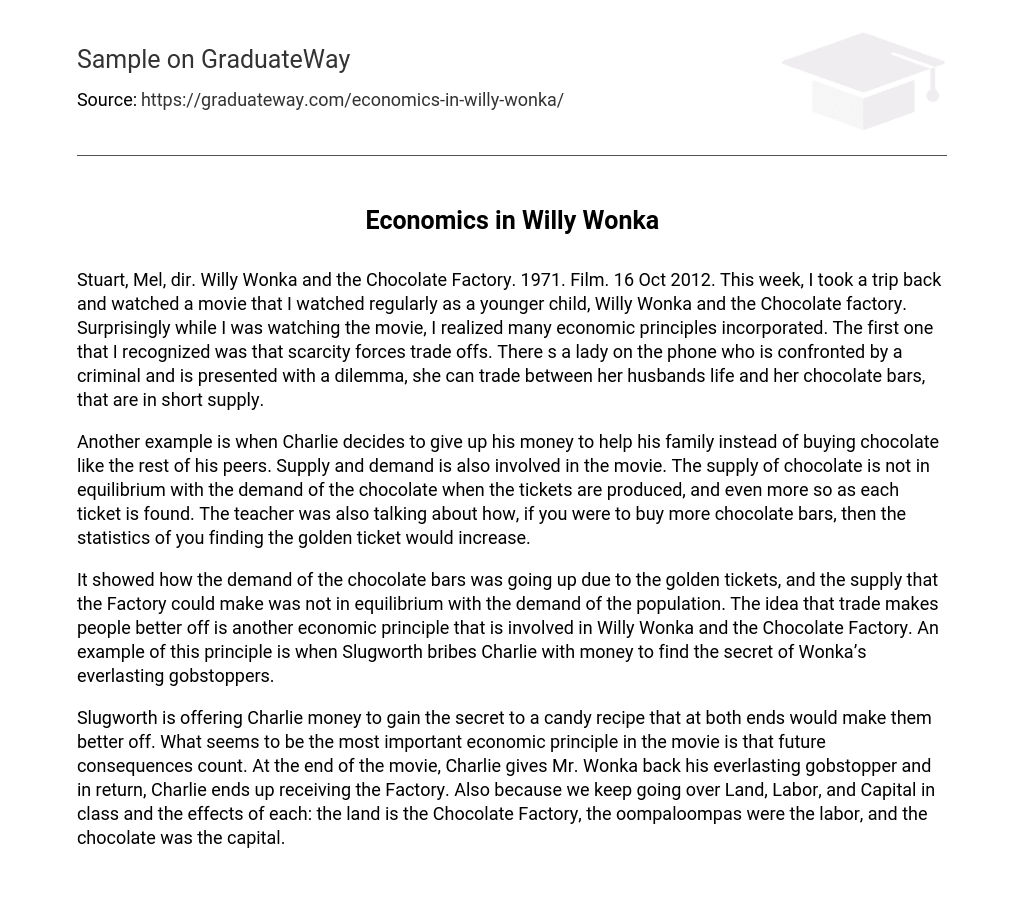Stuart, Mel, dir. Willy Wonka and the Chocolate Factory. 1971. Film. 16 Oct 2012. This week, I took a trip back and watched a movie that I watched regularly as a younger child, Willy Wonka and the Chocolate factory. Surprisingly while I was watching the movie, I realized many economic principles incorporated. The first one that I recognized was that scarcity forces trade offs. There s a lady on the phone who is confronted by a criminal and is presented with a dilemma, she can trade between her husbands life and her chocolate bars, that are in short supply.
Another example is when Charlie decides to give up his money to help his family instead of buying chocolate like the rest of his peers. Supply and demand is also involved in the movie. The supply of chocolate is not in equilibrium with the demand of the chocolate when the tickets are produced, and even more so as each ticket is found. The teacher was also talking about how, if you were to buy more chocolate bars, then the statistics of you finding the golden ticket would increase.
It showed how the demand of the chocolate bars was going up due to the golden tickets, and the supply that the Factory could make was not in equilibrium with the demand of the population. The idea that trade makes people better off is another economic principle that is involved in Willy Wonka and the Chocolate Factory. An example of this principle is when Slugworth bribes Charlie with money to find the secret of Wonka’s everlasting gobstoppers.
Slugworth is offering Charlie money to gain the secret to a candy recipe that at both ends would make them better off. What seems to be the most important economic principle in the movie is that future consequences count. At the end of the movie, Charlie gives Mr. Wonka back his everlasting gobstopper and in return, Charlie ends up receiving the Factory. Also because we keep going over Land, Labor, and Capital in class and the effects of each: the land is the Chocolate Factory, the oompaloompas were the labor, and the chocolate was the capital.





